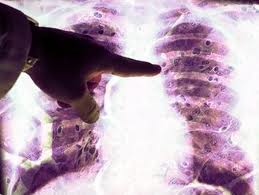What is Asbestos?
Asbestos is a term for several commonly found fibrous magnesium-silicate minerals. Due to their durable and versatile nature, asbestos materials were used widely in construction and manufacturing for most of the 20th century. Today, it is widely understood that asbestos is an extremely harmful substance. However, this was not always known. Even minimal inhalation of these asbestos fibers can develop into serious, and even fatal, conditions. In 1918, The United States Department of Labor issued a bulletin stating that there was an “urgent need for more qualified extensive investigation” into the severe harm caused by asbestos. Nevertheless, many industries kept using asbestos.
For decades, construction workers, vehicle mechanics, shipyard workers, electricians, and others employed in the building trades did not realize the danger, as they were exposed to asbestos on a daily basis. Even now, workers renovating or demolishing old buildings may encounter asbestos. The danger was not limited those who directly handled the asbestos. If a worker had substantial exposure to asbestos, his or her co-worker or spouse also was vulnerable to asbestos-related illness.
Eventually scientific research confirmed the life-threatening risks caused by exposure to airborne asbestos fibers. However, companies still ignored the danger, and continued to make and use products containing asbestos, until it was banned during the latter part of the 20th century. Asbestos was used widely in heavy industry, as well as insulation in hair dryers, electrical wiring, cement, paper, roofing materials, floorboards, and hundreds of other common items. Despite the legal ban on new uses, over one million Americans are endangered by exposure to existing asbestos sources every year.
Asbestos Removal
Asbestos still exists in many older buildings, including schools, hospitals, airports, and factories across Michigan. From skyscrapers to residential buildings, asbestos continues to threaten the health of unsuspecting citizens.
Removal of asbestos is a complex process. Special precautions are necessary, to avoid release of asbestos fibers into the surrounding environment. Otherwise, the asbestos will endanger anyone in the area, who inhales or ingests its odorless and tasteless microscopic fibers. The danger is great, because any amount of asbestos can be harmful. For these reasons, there is a conflict between those who push for removal of asbestos from existing structures, and those who oppose it, if it is unlikely to enter building ventilation systems.
Some companies and government agencies arrange for asbestos removal to prevent public exposure, while others do so to avoid potential litigation. Still other projects are driven by legislation or public outcry for asbestos removal from public buildings, including many older schools across the country.
Mesothelioma and Asbestos Related Diseases
Three serious health conditions may result from exposure to even a small amount of airborne asbestos fibers. All three conditions result from inhaling the fibers, which become embedded in the lungs or other parts of the body. It can take years for symptoms of any of these asbestos illness to appear. Some experts believe that no symptoms appear for more than a decade after exposure. In some cases, it takes even longer for the illness to become evident. The following is information about the three major conditions resulting from asbestos exposure.
Mesothelioma
The medical profession used to consider this type of cancer as quite rare. While still uncommon, the number of workers diagnosed with mesothelioma has risen. Now, about 3,000 new mesothelioma cases are reported in the United States every year. The incidence of this disease is increasing at an even higher rate in Europe. Mesothelioma is a form of cancer, usually caused by asbestos fibers that actually penetrate lung tissue. It is also possible for mesothelioma to develop after these fibers penetrate the heart or the abdomen. While doctors have found many different causes for other forms of cancer, the only definitely identified cause of mesothelioma is exposure to asbestos.
Asbestosis
Sometimes, this term is used incorrectly to refer to all ailments resulting from asbestos exposure. However, it is actually a very specific condition. Asbestosis (also known as interstitial fibrosis) develops when inhaled asbestos fibers cause scarring of the lung tissue. Over time, this scarring reduces the capacity of the lung. Individuals with asbestosis may suffer disabling lung impairments, and must be monitored closely because they are at increased risk of even more serious asbestos-related conditions.
Lung Cancer
Lung cancer is all too common in our society and has many possible causes. However, there is evidence of a link between asbestos exposure and lung cancer. The risk of lung cancer is even higher for an individual who has been exposed to asbestos, and also smokes cigarettes. Mesothelioma Treatment Options “Staging” is a term that medical professionals use to define the spread and extent of cancers like mesothelioma. In general, the least serious “first stage” only involves the lining of the lung. By the most serious “stage four,” cancer has spread to other organs of the body.
Medical researchers continue to improve treatment for mesothelioma. The most common form of treatment is still chemotherapy. With new combinations of drugs, such as pemetrexed and carboplatin, chemotherapy may slow the progression of cancer in some victims. Radiation or surgery is the an appropriate treatment for other mesothelioma patients. In addition, some experimental treatments are yielding promising test results and offer hope for future victims.
Mesothelioma is still regarded as a deadly form of cancer. The average life span after diagnosis is only one to two years. However, the stage of the disease when it is discovered, and an individual’s response to treatment are significant factors in determining life expectancy. Due to medical progress, 20% of those diagnosed at an early stage of mesothelioma have at least 5 more years to live.
Mesothelioma Symptoms and Mesothelioma Diagnosis
Men are many times more likely to develop mesothelioma than women. This may be due to the higher percentage of men who work in factories and construction, where there is an increased risk of exposure to airborne asbestos fibers. Older men are more likely to be diagnosed with mesothelioma. This is not surprising, because of the relatively long period of time between asbestos exposure and the onset of this cancer.
Physicians may have difficulty diagnosing mesothelioma, because initial symptoms, such as shortness of breath and chest or abdominal pain, can be confused with other conditions. There are tests to rule out mesothelioma, including a thoracoscopy or a peritoneoscopy.
- If you have symptoms and believe that you may have past asbestos exposure, see your doctor immediately.
- If you or a loved one suffer from asbestos related cancer or mesothelioma cancer, talk today with an experienced asbestos lawyer specialist, Jerry Neil Paul.
 One can make a valiant effort to possibly live through this dreaded disease by trying to understand its symptoms and how to detect it as early as possible.
One can make a valiant effort to possibly live through this dreaded disease by trying to understand its symptoms and how to detect it as early as possible.


